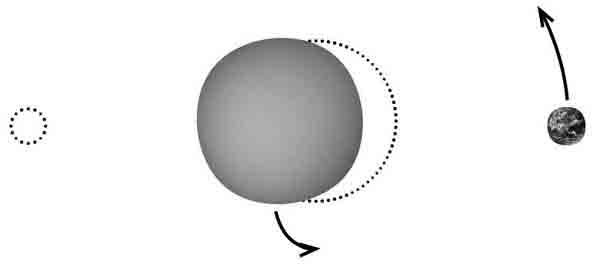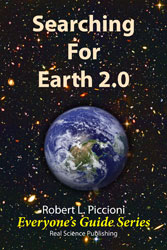|
From the 16th century onward, scientists began to
understand that the stars in the heavens are suns much like our own.
They started to wonder whether those other suns had their own planets.
And if so, they wondered, could any of those planets be like Earth.
Profound questions, but how could we answer them? Stars are typically a
million times brighter than the planets that huddle near them. This
means a star’s light swamps the feeble glow of any nearby planet. It
seemed the search for exoplanets, planets beyond our own Solar System,
would be like trying to spot a firefly next to a searchlight that’s
3000 miles away.
It seemed hopeless. But never underestimate human ingenuity.
This book describes the methods used to find exoplanets and how
astronomers have succeeded in finding nearly a thousand new
worlds.
Example
| The
Wobble Method |

|
Astronomers first discovered exoplanets
orbiting a normal star using the wobble method, which is also called
the radial velocity method.
This method relies on the small motions of host stars caused by
exoplanets that orbit them. As surprising as it may seem at first,
stars do move slightly in response to the gravitational tug of their
planets, even though the stars may be a million times more massive.
|
|
See all the books
in the
Everyone's
Guide
Series
|

